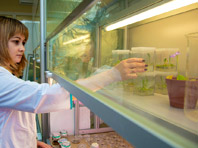Журнал "Медицинский совет. Педиатрия" №17, 2018
И.Н. ЗАХАРОВА, И.В. БЕРЕЖНАЯ ФГБОУ ДПО «Российская медицинская академия непрерывного профессионального образования» Минздрава России, Москва
Во всех странах мира отмечен рост аллергической патологии. В последние годы ученые говорят о том, что до 30–40% взрослого населения страдают различными формами аллергии (гастроинтестинальной, кожной, респираторной в изолированном или комбинированном вариантах). Несмотря на более глубокое понимание патогенеза атопических заболеваний и достижения фармакологии, тенденции к снижению числа детей с этой патологией не отмечается. Экспертами разных специальностей (педиатрами, аллергологами, дерматологами, иммунологами, гастроэнтерологами) активно обсуждается роль микробиоты кишечника среди механизмов развития пищевой аллергии. В статье рассматриваются вопросы патогенеза пищевой аллергии и атопического дерматита у детей, обсуждаются возможности применения пробиотиков в комплексной терапии с учетом результатов клинических мировых исследований.
Загрузить файл статьи в формате PDF
Список литературы
1. Sur G, Sur ML, Sur D, Coroian A, Floca E. Immunological Reactions in Atopic Dermatitis and Possible Improvement of Probiotics. Pharm Anal Acta, 2015, 6: 9. https://doi.org/10.4172/21532435.1000420.
2. Прошутинская Д.В., Чикин В.В., Знаменская Л.Ф. и др. Федеральные клинические рекомендации по ведению больных атопическим дерматитом. 2015. [Электронный ресурс]. Режим доступа: http: www.cnikvi.ru/docs/clinic_recs/bolezni-kozhi-i-pridatkovkozhi/atopicheskiy_dermatit
3. Cipriani F, Dondi A, Ricci G. Recent advances in epidemiology and prevention of atopic eczema. Pediatr Allergy Immunol, 2014, 25(7): 630-638.
4. Hwang CY, Chen YJ, Lin MW et al. Prevalence of atopic dermatitis, allergic rhinitis and asthma in Taiwan: a national study 2000 to 2007. Acta DermVenereol, 2010, 90(6): 589-594.
5. Shaw ТЕ, Currie GP, Koudelka CW et al. Eczema prevalence in the United States: data from the 2003 National Survey of Children’s Health. J Invest Dermatol, 2011, 131(1): 67-73.
6. Ильина Н.И., Федоскова Т.Г. Роль аллергических заболеваний в общеклинической практике. РМЖ, 2004, 14: 876-879.
7. Богова А.В., Ильина Н.И., Лусс Л.В. Тенденции в изучении эпидемиологии аллергических заболеваний в России за последние 10 лет. Рос. аллергол. журн., 2008, 4: 3-15.
8. Альбанова В.И., Пампура А.Н. Атопический дерматит: учебное пособие. М., 2014.
9. Смирнова Г.И. Атопический дерматит у детей: новое в патогенезе, диагностике и лечении. Лечащий врач, 2017, 4.
10. Spergel JM. Epidemiology of atopic dermatitis and atopic march in children. Immunol Allergy Clin North Am, 2010 Aug, 30(3): 269-280. https://doi.org/10.1016/j.iac.2010.06.003.
11. Wolf R, Wolf D. Abnormal epidermal barrier in the pathogenesis of atopic dermatitis. Clin Dermatol, 2012, 30(3): 329-334.
12. Варламов Е.Е., Пампура А.Н. Значение филаггрина в развитии атопического дерматита. Российский аллергологический журнал, 2011, 5: 26-30.
13. Liang Y, Chang C, Lu Q. The Genetics and Epigenetics of Atopic Dermatitis-Filaggrin and Other Polymorphisms. Clin Rev Allergy Immunol, 2016, 51(3): 315-328.
14. Van Smeden J, Bouwstra JA. Stratum Corneum Lipids: Their Role for the Skin Barrier Function in Healthy Subjects and Atopic Dermatitis Patients. Curr Probl Dermatol, 2016, 49: 8-26. https://doi.org/10.1159/000441540.
15. Di ZH, Ma L, Qi RQ, Sun XD, Huo W, Zhang L et al. T Helper Cytokines Differentially Modulate Expression of Filaggrin and its Processing Proteases in Human Keratinocytes. Chin Med J (Engl), 2016, 129(3): 295-303.
16. Kendall AC, Nicolaou A. Bioactive lipid mediators in skin inflammation and immunity. Prog Lipid Res, 2013, 52(1): 141-164.
17. Kubo A, Nagao K, Amagai M. Epidermal barrier dysfunction and cutaneous sensitization in atopic diseases. J Clin Invest, 2012, 122(2): 440- 447.
18. Allen H et al. The presence and impact of Biofilm-Producing Staphylococci in Atopic Dermatitis JAMA, 2014, 150(3): 260-265.
19. Kuo CL, Chen TL, Liao CC, Yeh CC, Chou CL, Lee WR et al. Birth month and risk of atopic dermatitis: a nationwide population-based study. Allergy, 2016, 71(11): 1626-1631.
20. Пампура А.Н., Варламов Е.Е., Конюкова Н.Г. Пищевая аллергия у детей раннего возраста. Педиатрия, 2016, 95(3): 152-157.
21. Lifschitz C, Szaewska H. Cow’smilk allergy: evidencebased diagnosis and management for the practitioner. Eur J Pediatr, 2015, 174(2): 141- 150.
22. Urisu A, Kondo Y, Tsude I. Hen’s Egg Allergy. Chem Immunol Allergy, 2015, 101: 124-130.
23. Тренева М.С., Мунблит Д.Б., Иванников Н.Ю., Лиханова Л.А., Пампура А.Н. Распространенность атопического дерматита и реакций на пищевые продукты у московских детей в возрасте 2 лет. Педиатрия, 2014, 93(3): 11-14.
24. Kattan JD, Cocco RR, Jarvinen KM. Milk and soy allergy. Pediatr Clin North Am, 2011, 58(2): 407- 426.
25. Consortium HMJRS, Nelson KE, Weinstock GM, Highlander SK, Worley KC, Creasy HH, Wortman JR, Rusch DB, Mitreva M, Sodergren E, Chinwalla AT, Feldgarden M, Gevers D, Haas BJ, Madupu R, Ward DV, Birren BW, Gibbs RA, Methe B, Petrosino JF, Strausberg RL, Sutton GG, White OR, Wilson RK, Durkin S, Giglio MG, Gujja S, Howarth C, Kodira CD, Kyrpides N, et al. A catalog of reference genomes from the human microbiome. Science, 2010, 328: 994- 999.
26. Bilal JA, Ahmad MI, Robaee AA, Alzolibani AA, Shobaili HA, Al-Khowailed MS. Pattern of bacterial colonization of atopic dermatitis in Saudi children. J Clin Diagn Res, 2013, 7(9): 1968- 1970.
27. Zeeuwen PL, Kleerebezem M, Timmerman HM, Schalkwijk J. Microbiome and skin diseases. Curr Opin Allergy Clin Immunol, 2013, 13(5): 514-520.
28. Kong HH, Oh J, Deming C et al. Temporal shifts in the skin microbiome associated with disease flares and treatment in children with atopic dermatitis. Genome Res., 2012, 22: 850-9.
29. Gioti A, Nystedt B, Li W et al. Genomic insights into the atopic eczema-associated skin commensal yeast Malassezia sympodialis. mBio, 2013, 4: e00572-00512.
30. Patrick L, Zeeuwen M, Boekhorst J, van den Bogaard EH, de Koning HD, van de Kerkhof PM, Saulnier DM, van Swam II, van Hijum SA, Kleerebezem M, Schalkwijk J, Timmerman HM. Microbiome dynamics of human epidermis following skin barrier disruption. Genome Biol, 2012, 13: 101.
31. Cogen AL, Nizet V, Gallo RL. Skin microbiota: a source of disease or defence? Br J Dermatol, 2008, 158: 442-455.
32. Silva SH, Guedes AC, Gontijo B, Ramos AM, Carmo LS, Farias LM, Nicoli JR. Influence of narrow-band UVB phototherapy on cutaneous microbiota of children with atopic dermatitis. J Eur Acad Dermatol Venereol, 2006, 20(9): 1114- 1120.
33. Dotterud LK, Wilsgaard T, Vorland LH, Falk ES. The effect of UVB radiation on skin microbiota in patients with atopic dermatitis and healthy controls. Int J Circumpolar Health, 2008, 67(2-3): 254-260.
34. Marrs T, Flohr C. The Role of Skin and Gut Microbiota in the Development of Atopic Eczema. British Journal of Dermatology, 2016, 2: 13-18. https: doi.org/10.1111/bjd.14907.
35. Abrahamsson TR, Jakobsson HE, Andersson AF, Bjorksten B, Engstrand L and Jenmalm MC. Low Gut Microbiota Diversity in Early Infancy Precedes Asthma at School Age. Clinical & Experimental Allergy, 2014, 44: 842-850. https: doi.org/10.1111/cea.12253.
36. Bantz SK, Zhu Z and Zheng T. The Atopic March: Progression from Atopic Dermatitis to Allergic Rhinitis and Asthma. Journal of Clinical and Cellular Immunology, 2014, 5: 202.
37. Marrs T, Flohr C. The role of skin and gut microbiota in the development of atopic eczema. Br J Dermatol, 2016, 175(2): 13-18.
38. Brown EM, Arrieta MC, Finlay BB. A fresh look at the hygiene hypothesis: how intestinal microbial exposure drives immune effector responses in atopic disease. Semin Immunol, 2013, 25(5): 378-387.
39. Bjorksten B, Sepp E, Julge K, Voor T, Mikelsaar M. Allergy development and the intestinal microflora during the first year of life. J Allergy Clin Immunol, 2001, 108: 516-520.
40. Renz-Polster H, David MR, Buist AS, Vollmer WM, O’Connor EA, Frazier EA, Wall MA. Caesarean section delivery and the risk of allergic disorders in childhood. Clin Exp Allergy, 2005, 35: 1466-1472.
41. Захарова И.Н., Бережная И.В., Мачнева Е.Б., Кучина А.Е., Облогина И.С. Грудное молоко - первый шаг к программированию здоровья в течение последующей жизни. Вестник Росздравнадзора, 2018, 1: 28-34.
42. Newburg DS. Oligosaccharides in human milk and bacterial colonization. J Pediatr Gastroenterol Nutr, 2000, 30(2): 8-17.
43. Cabana MD, McKean M, Wong AR, Chao C, Caughey AB. Examining the hygiene hypothesis: the Trial of infant probiotic supplementation. Paediatr Perinat Epidemiol, 2007, 21(3): 23-28.
44. Kalliomaki M, Salminen S, Poussa T, Isolauri E. Probiotics during the first 7 years of life: a cumulative risk reduction of eczema in a randomized, placebocontrolled trial. J Allergy Clin Immunol, 2007, 119(4): 1019-1021.
45. Gareau MG, Sherman PM, Walker WA. Probiotics and the gut microbiota in intestinal health and disease. Nat Rev Gastroenterol Hepatol, 2010, 7(9): 503-514.
46. FAO/WHO. Guidelines for the Evaluation of Probiotics in Food. Report of a Joint FAO/WHO Working Group on Drafting Guidelines for the Evaluation of Probiotics in Food. 2006, 88: 1-36.
47. Лахтин В.М., Афанасьев С.С., Алешкин В.А., Несвижский Ю.В., Поспелова В.В., Лахтин М.В. и соавт. Стратегические аспекты конструирования пробиотиков будущего. Вестник РАМН, 2008, 2: 33-44.
48. Kalliomaki M, Antoine JM, Herz U, Rijkers GT, Wells JM, Mercenier A. Guidance for substantiating the evidence for beneficial effects of probiotics: prevention and management of allergic diseases by probiotics. J Nutr, 2010, 140(3): 713-721.
49. Wickens K, Stanley TV, Mitchell EA, Barthow C, Fitzharris P, Purdie G et al. Early supplementation with Lactobacillus rhamnosus HN001 reduces eczema prevalence to 6 years: does it also reduce atopic sensitization? Clin Exp Allergy, 2013, 43(9): 1048-1157.
50. Elazab N, Mendy A, Gasana J, Vieira ER, Quizon A, Forno E. Probiotic administration in early life, atopy, and asthma: a meta-analysis of clinical trials. Pediatrics, 2013, 132(3): 666- 676.
51. Wickens K, Black PN, Stanley TV, Mitchell E, Fitzharris P, Tannock GW, Purdie G, Crane J. A differential effect of 2 probiotics in the prevention of eczema and atopy: a double-blind, randomized, placebo-controlled trial. J Allergy Clin Immunol, 2008, 122(4): 788-794.
52. Ouwehand AC. Antiallergic Effects of Probiotics. J Nutr, 2007, 137: 794-797.
53. Rautava S, Kainonen E, Salminen S, Isolauri E. Maternal probiotic supplementation during pregnancy and breast-feeding reduces the risk of eczema in the infant. J Allergy Clin Immunol, 2012, 130(6): 1355-1360.
54. Kopp MV, Hennemuth I, Heinzmann A, Urbanek R. Randomized, Double-Blind, PlaceboControlled Trial of Probiotics for Primary Prevention: No Clinical Effects of Lactobacillus GG Supplementation. Pediatrics, 2008, 121(4): 850-856.
55. Boyle RJ, Ismail IH, Kivivuori S, Licciardi PV, Robins-Browne RM, Mah LJ, Axelrad C, Moore S, Donath S, Carlin JB, Lahtinen SJ, Tang ML. Lactobacillus GG treatment during pregnancy for the prevention of eczema: a randomized controlled trial. Allergy, 2011, 66: 509-516.
56. The Royal Australian College of General Practitioners (RACGP) General Practice: Health of the Nation 2017 https: www.racgp.org.au/your-practice/guidelines/handi/interventions/children/probiotics-in-pregnancy-for-i...




 1
1 2
2 3
3 4
4


Комментарии (0)